Dynamics of Microbeams under Multi-Frequency Excitations
Abstract
:1. Introduction
2. Response to Two Harmonic Sources
2.1. Problem Formulation
2.2. Case I: Primary Resonance
2.3. Case II: Secondary Resonances
3. Case III: Response to Three Harmonic Sources
4. Experimental Case Study
5. Conclusions
Acknowledgments
Author Contributions
Conflicts of Interest
References
- Clark, J.R.; Hsu, W.T.; Abdelmoneum, M.A.; Nguyen, C.C. High-Q UHF micromechanical radial-contour mode disk resonators. J. Microelectromech. Syst. 2005, 14, 1298–1310. [Google Scholar] [CrossRef]
- Wang, J.; Ren, Z.; Nguyen, C.C. 1.156-GHz self-aligned vibrating micromechanical disk resonator. IEEE Trans. Ultrason. Ferroelectr. Freq. Control 2004, 51, 1607–1628. [Google Scholar] [CrossRef] [PubMed]
- Xie, Y.; Li, S.S.; Lin, Y.W.; Ren, Z.; Nguyen, C.T.C. 1.52-GHz micromechanical extensional wine-glass mode ring resonators. IEEE Trans. Ultrason. Ferroelectr. Freq. Control 2008, 55, 890–907. [Google Scholar] [PubMed]
- Nguyen, C.T.-C. MEMS technology for timing and frequency control. IEEE Trans. Ultrason. Ferroelectr. Freq. Control 2007, 54, 251–270. [Google Scholar] [CrossRef] [PubMed]
- Wong, A.-C.; Nguyen, C.T.-C. Micromechanical mixer-filters (“mixlers”). J. Microelectromech. Syst. 2004, 13, 100–112. [Google Scholar] [CrossRef]
- Fedder, G.K. CMOS-MEMS resonant mixer-filters. In Proceedings of the IEEE International Electron Devices Meeting IEDM Technical Digest, Washington, DC, USA, 5–7 December 2005; pp. 274–277.
- Chen, F.; Brotz, J.; Arslan, U.; Lo, C.C.; Mukherjee, T.; Fedder, G.K. CMOS-MEMS resonant RF mixer-filters. In Proceedings of the 18th IEEE International Conference on Micro Electro Mechanical Systems (MEMS 2005), Miami Beach, FL, USA, 30 January–3 February 2005; pp. 24–27.
- Koskenvuori, M.; Tittonen, I. Improvement of the conversion performance of a resonating multimode microelectromechanical mixer-filter through parametric amplification. IEEE Electron Device Lett. 2007, 28, 970. [Google Scholar] [CrossRef]
- Elnagar, A.M.; El-Bassiouny, A.F. Response of self-excited three-degree-of-freedom systems to multifrequency excitations. Int. J. Theor. Phys. 1992, 31, 1531–1548. [Google Scholar] [CrossRef]
- Uranga, A.; Verd, J.; Lopez, J.L.; Teva, J.; Abadal, G.; Torres, F.; Barniol, N. Fully integrated MIXLER based on VHF CMOS-MEMS clamped-clamped beam resonator. Electron. Lett. 2007, 43, 452–454. [Google Scholar] [CrossRef]
- Hecht, D. Multifrequency acoustooptic diffraction. IEEE Trans. Sonics Ultrason. 1977, 24, 7–18. [Google Scholar] [CrossRef]
- Hammad, B.K. Natural Frequencies and Mode Shapes of Mechanically Coupled Microbeam Resonators with an Application to Micromechanical Filters. Shock Vib. 2014, 2014, 939467. [Google Scholar] [CrossRef]
- El-Bassiouny, A.F.; Abd El-Latif, G.M. Resonances in nonlinear structure vibrations under multifrequency excitations. Phys. Scr. 2006, 74, 410. [Google Scholar] [CrossRef]
- Ramini, A.; Ibrahim, A.I.; Younis, M.I. Mixed frequency excitation of an electrostatically actuated resonator. Microsyst. Technol. 2016, 22, 1967–1974. [Google Scholar] [CrossRef]
- Jaber, N.; Ramini, A.; Hennawi, Q.; Younis, M.I. Wideband MEMS resonator using multifrequency excitation. Sens. Actuators A Phys. 2016, 242, 140–145. [Google Scholar] [CrossRef]
- Jaber, N.; Ramini, A.; Younis, M.I. Multifrequency excitation of a clamped–clamped microbeam: Analytical and experimental investigation. Microsyst. Nanoeng. 2016, 2, 16002. [Google Scholar] [CrossRef]
- Ilyas, S.; Ramini, A.; Arevalo, A.; Younis, M.I. An experimental and theoretical investigation of a micromirror under mixed-frequency excitation. J. Microelectromech. Syst. 2015, 24, 1124–1131. [Google Scholar] [CrossRef]
- Farokhi, H.; Ghayesh, M.H. Thermo-mechanical dynamics of perfect and imperfect Timoshenko microbeams. Int. J. Eng. Sci. 2015, 91, 12–33. [Google Scholar] [CrossRef]
- Rashvand, K.; Rezazadeh, G.; Mobki, H.; Ghayesh, M.H. On the size-dependent behavior of a capacitive circular micro-plate considering the variable length-scale parameter. Int. J. Mech. Sci. 2013, 77, 333–342. [Google Scholar] [CrossRef]
- Farokhi, H.; Ghayesh, M.H. Nonlinear dynamical behaviour of geometrically imperfect microplates based on modified couple stress theory. Int. J. Mech. Sci. 2015, 90, 133–144. [Google Scholar] [CrossRef]
- Ghayesh, M.H.; Farokhi, H.; Amabili, M. In-plane and out-of-plane motion characteristics of microbeams with modal interactions. Compos. Part B Eng. 2014, 60, 423–439. [Google Scholar] [CrossRef]
- Ghayesh, M.H.; Farokhi, H. Coupled longitudinal-transverse-rotational behaviour of shear deformable microbeams. Compos. Part B Eng. 2015, 77, 319–328. [Google Scholar] [CrossRef]
- Ghayesh, M.H.; Farokhi, H.; Alici, G. Subcritical parametric dynamics of microbeams. Int. J. Eng. Sci. 2015, 95, 36–48. [Google Scholar] [CrossRef]
- Ghayesh, M.H.; Farokhi, H.; Alici, G. Size-dependent electro-elasto-mechanics of MEMS with initially curved deformable electrodes. Int. J. Mech. Sci. 2015, 103, 247–264. [Google Scholar] [CrossRef]
- Younis, M.I. MEMS Linear and Nonlinear Statics and Dynamics; Springer: New York, NY, USA, 2011. [Google Scholar]
- Nayfeh, A.H.; Younis, M.I. Dynamics of MEMS resonators under superharmonic and subharmonic excitations. J. Micromech. Microeng. 2005, 15, 1840. [Google Scholar] [CrossRef]
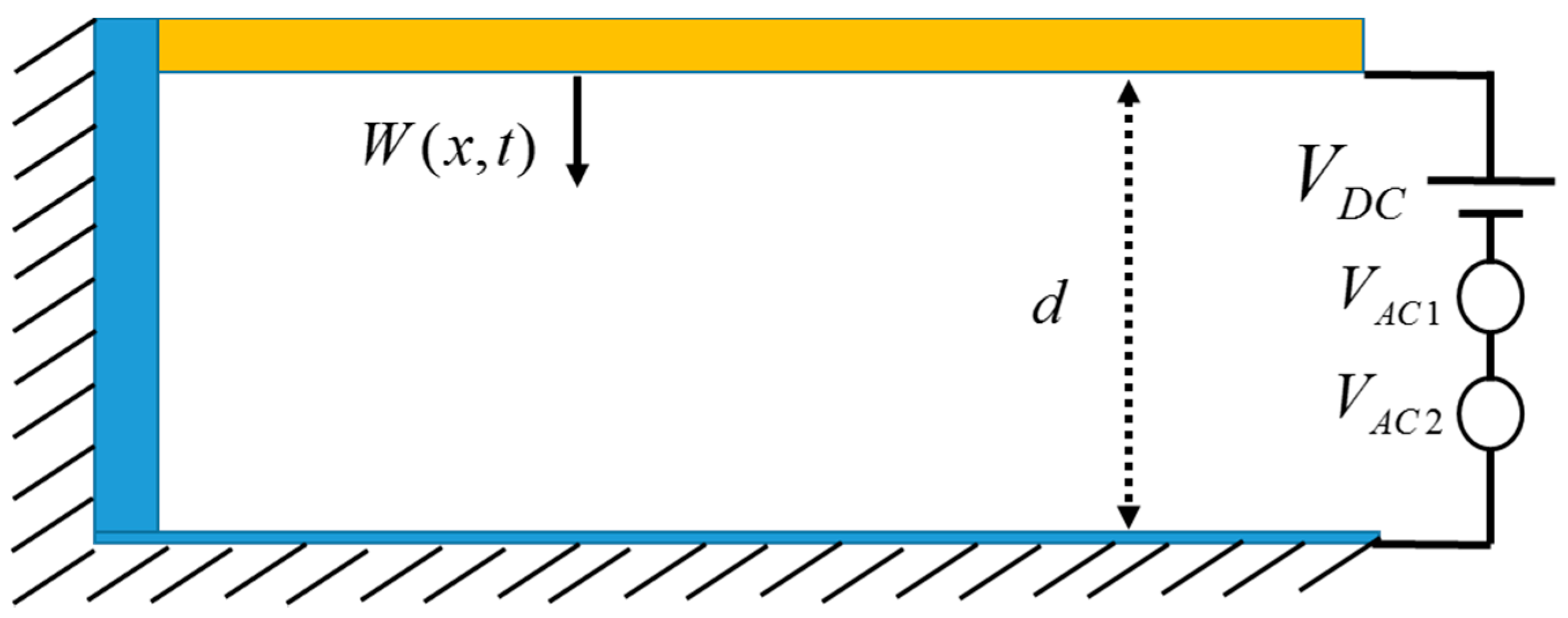
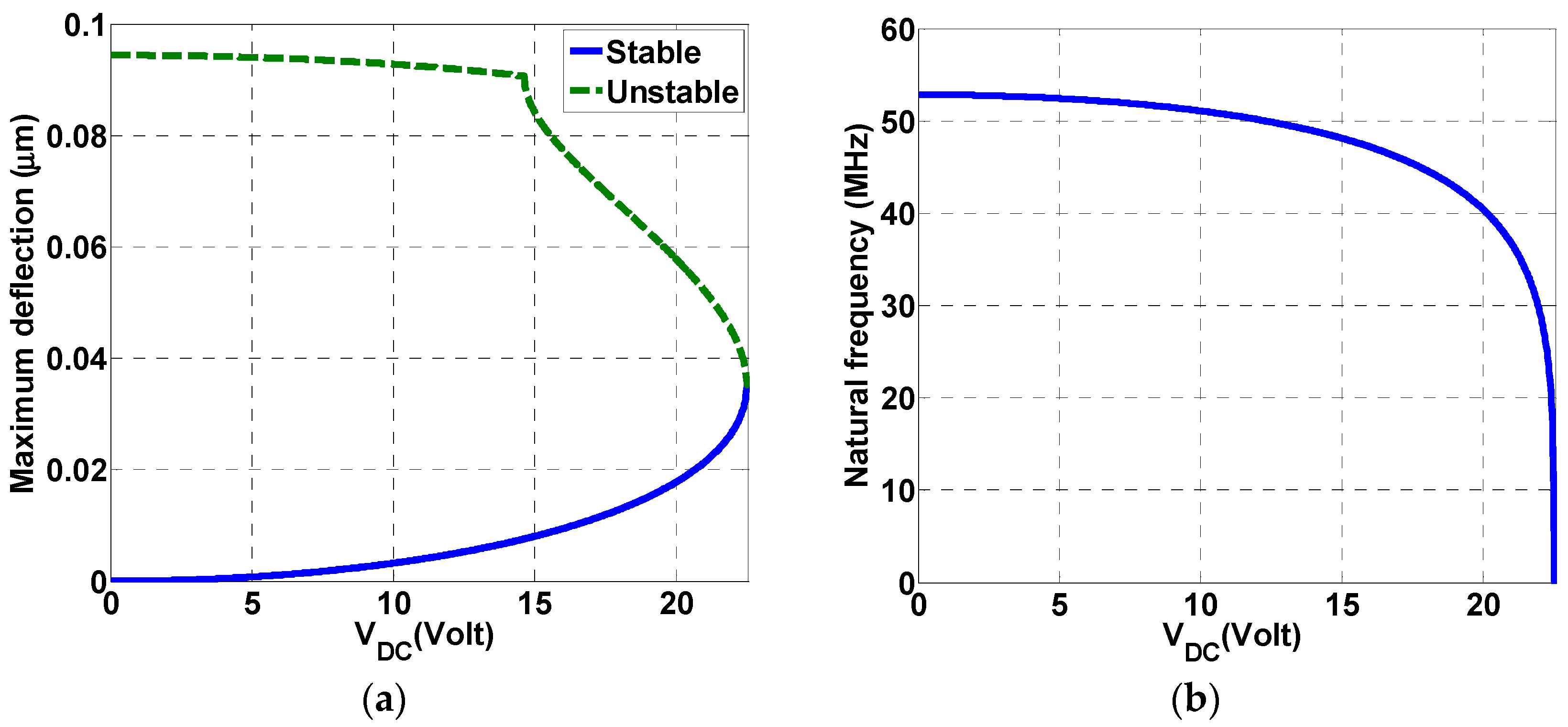
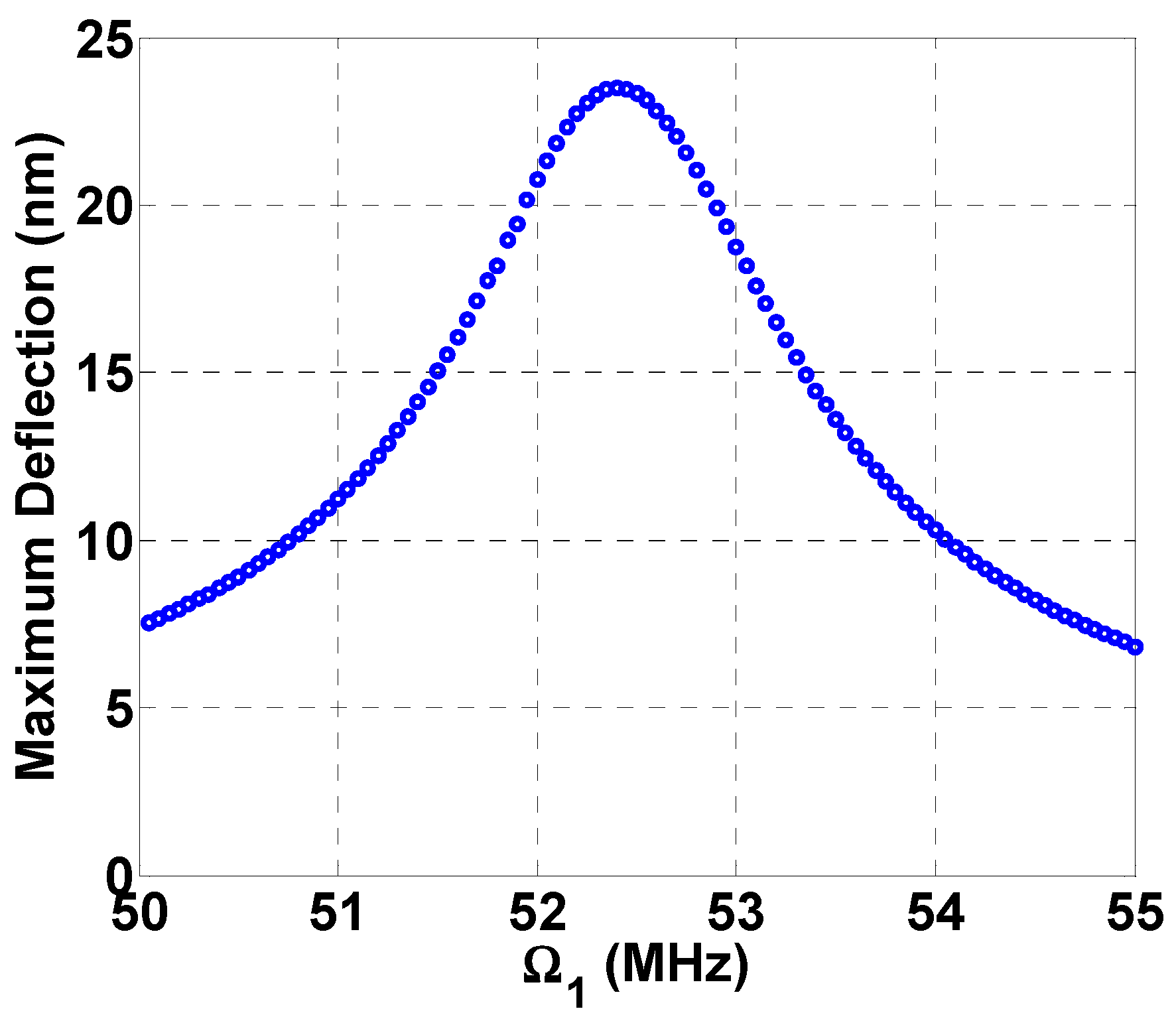
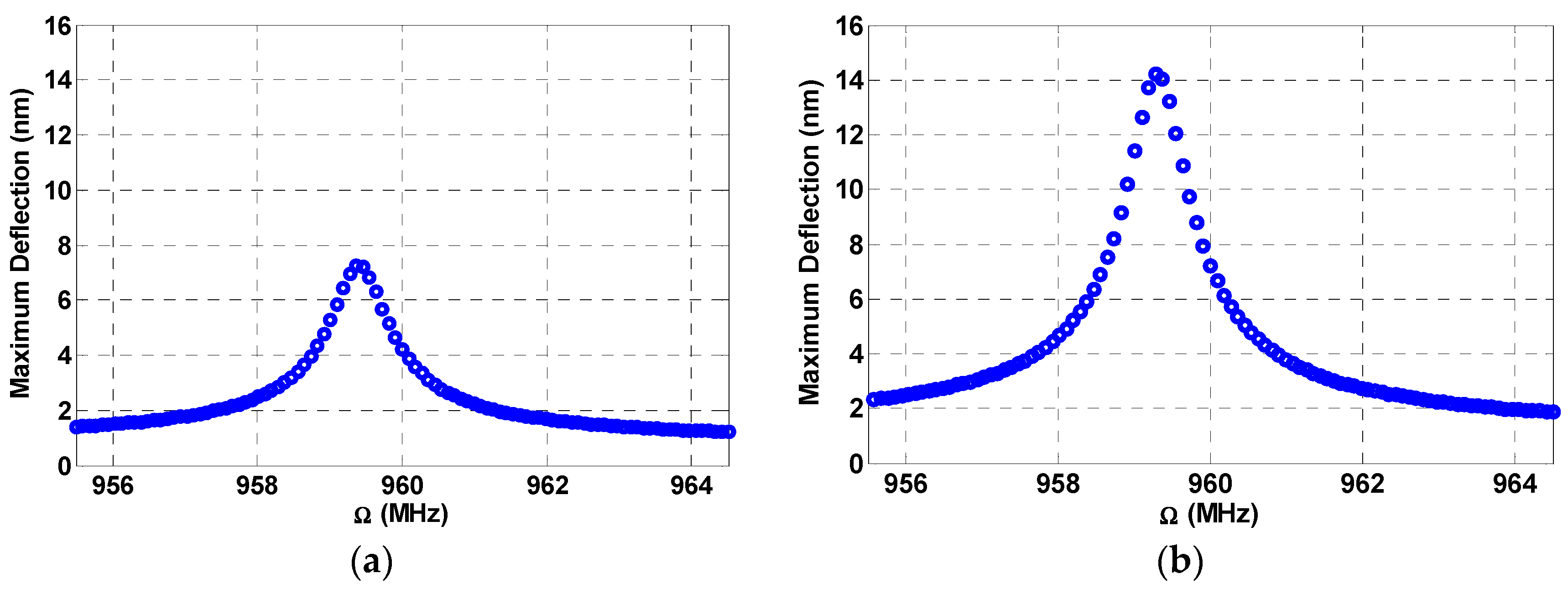
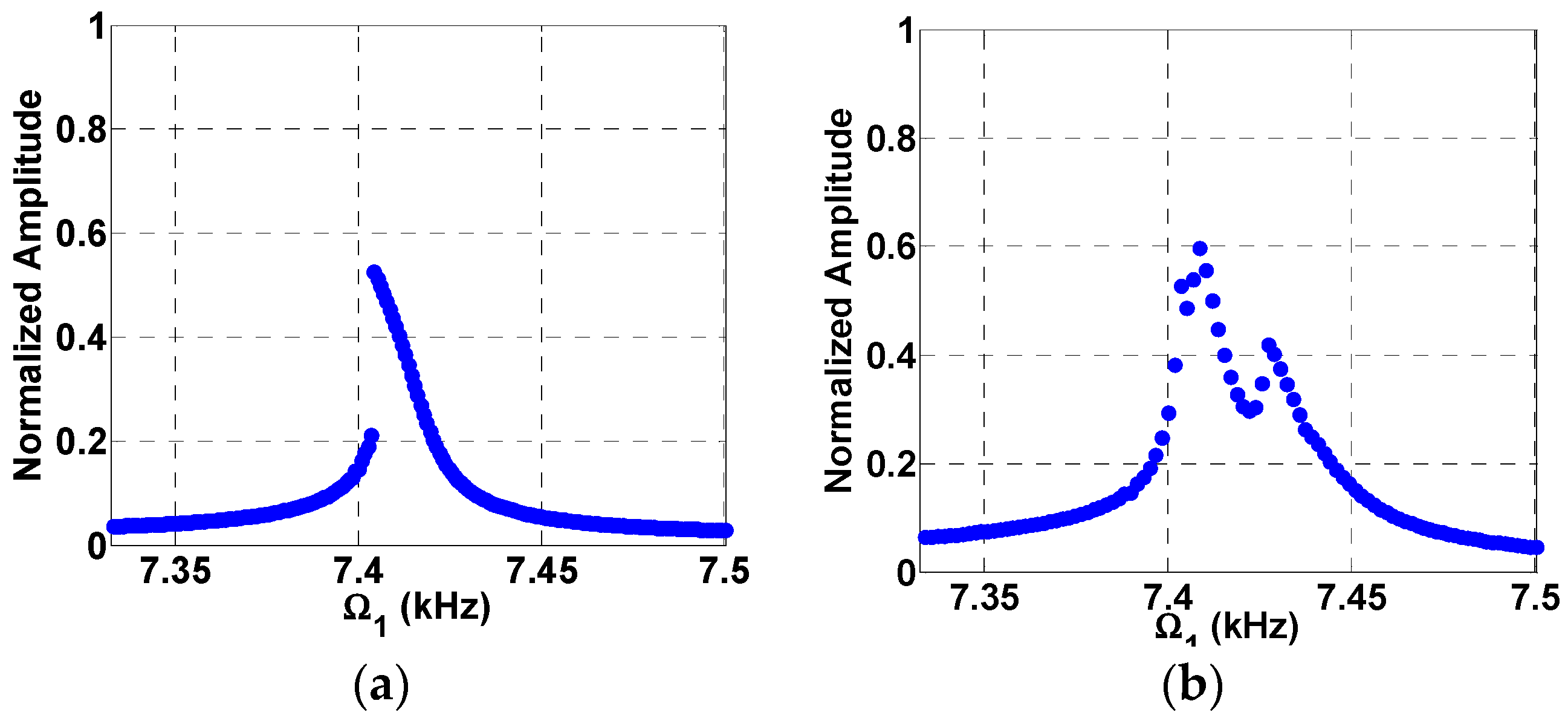
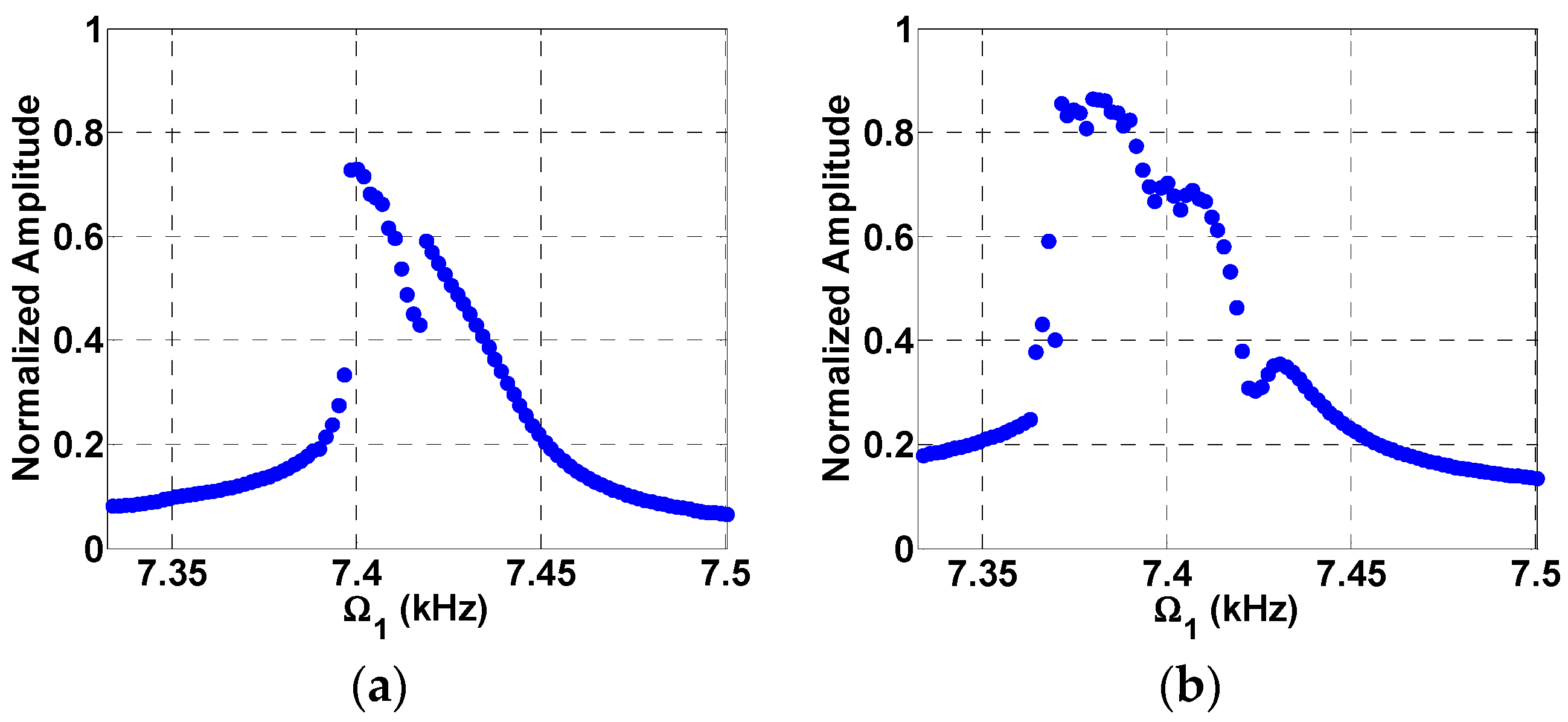
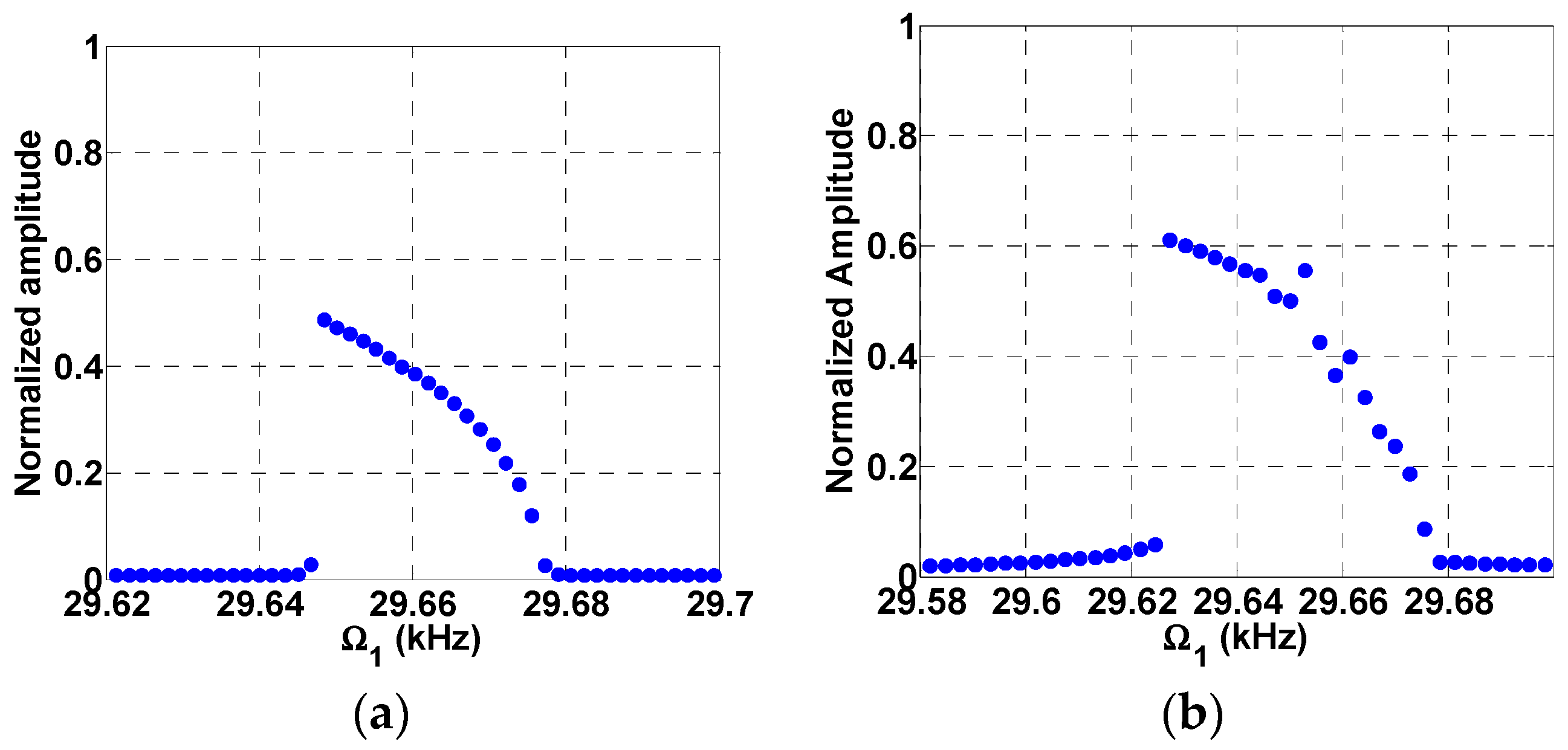
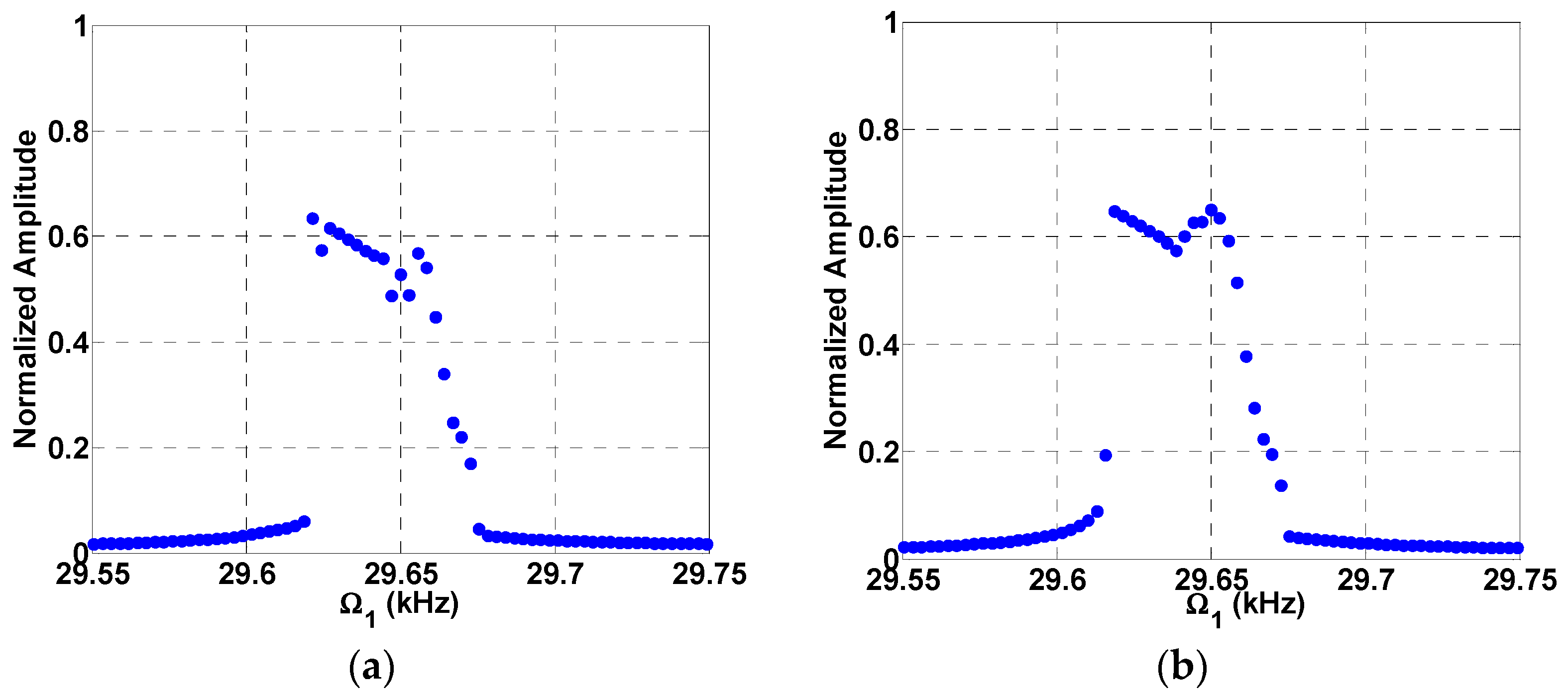
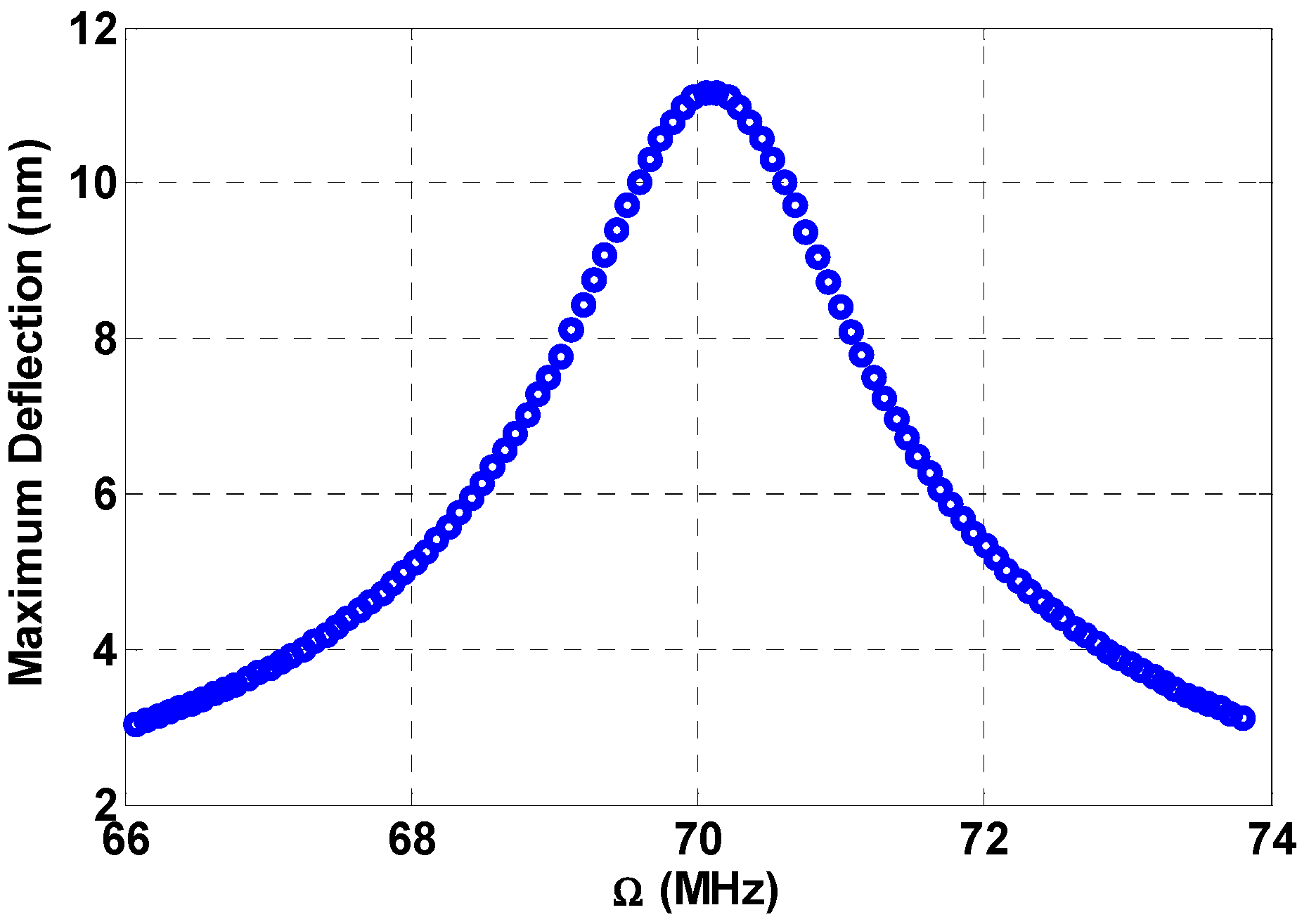
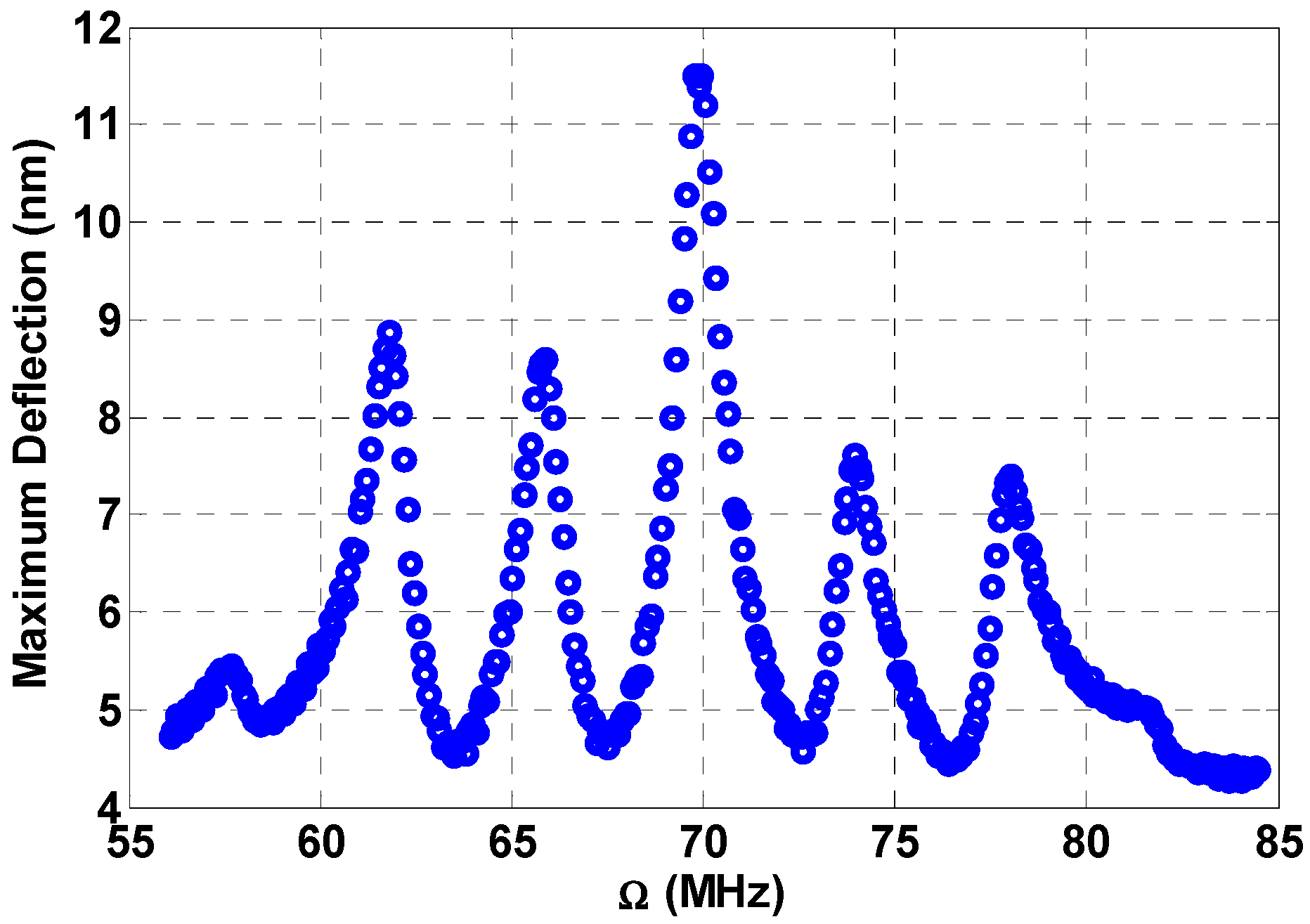
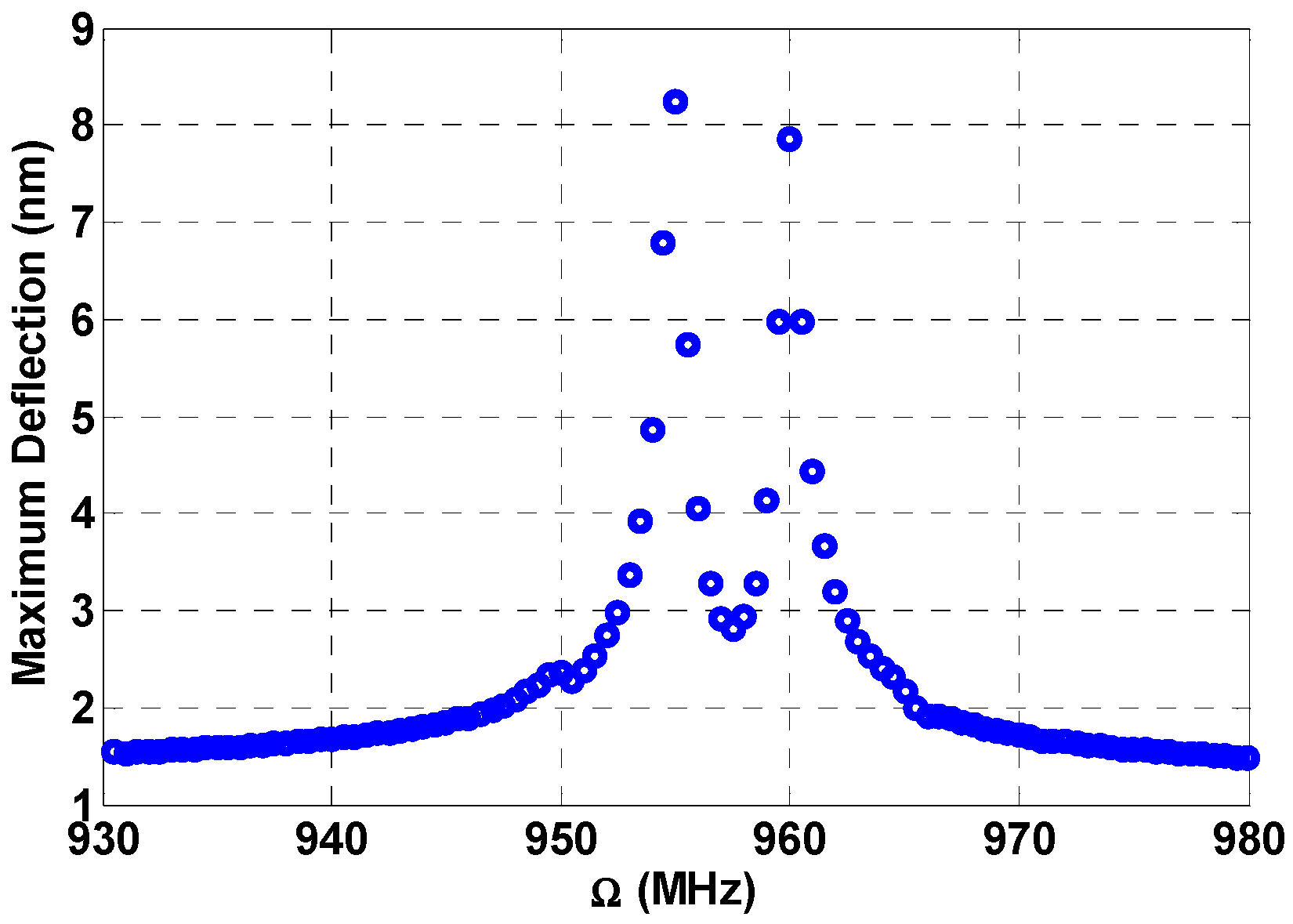
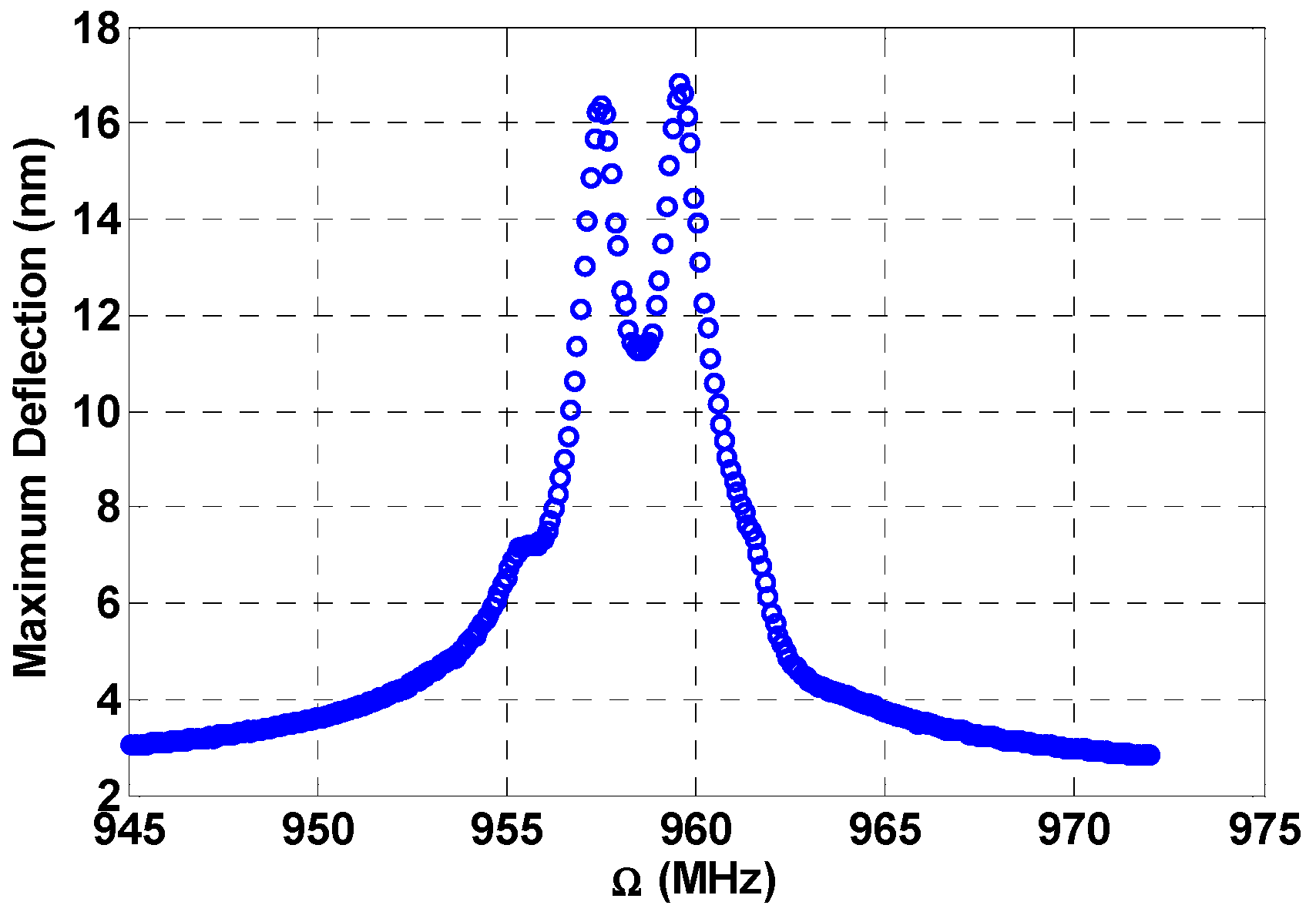
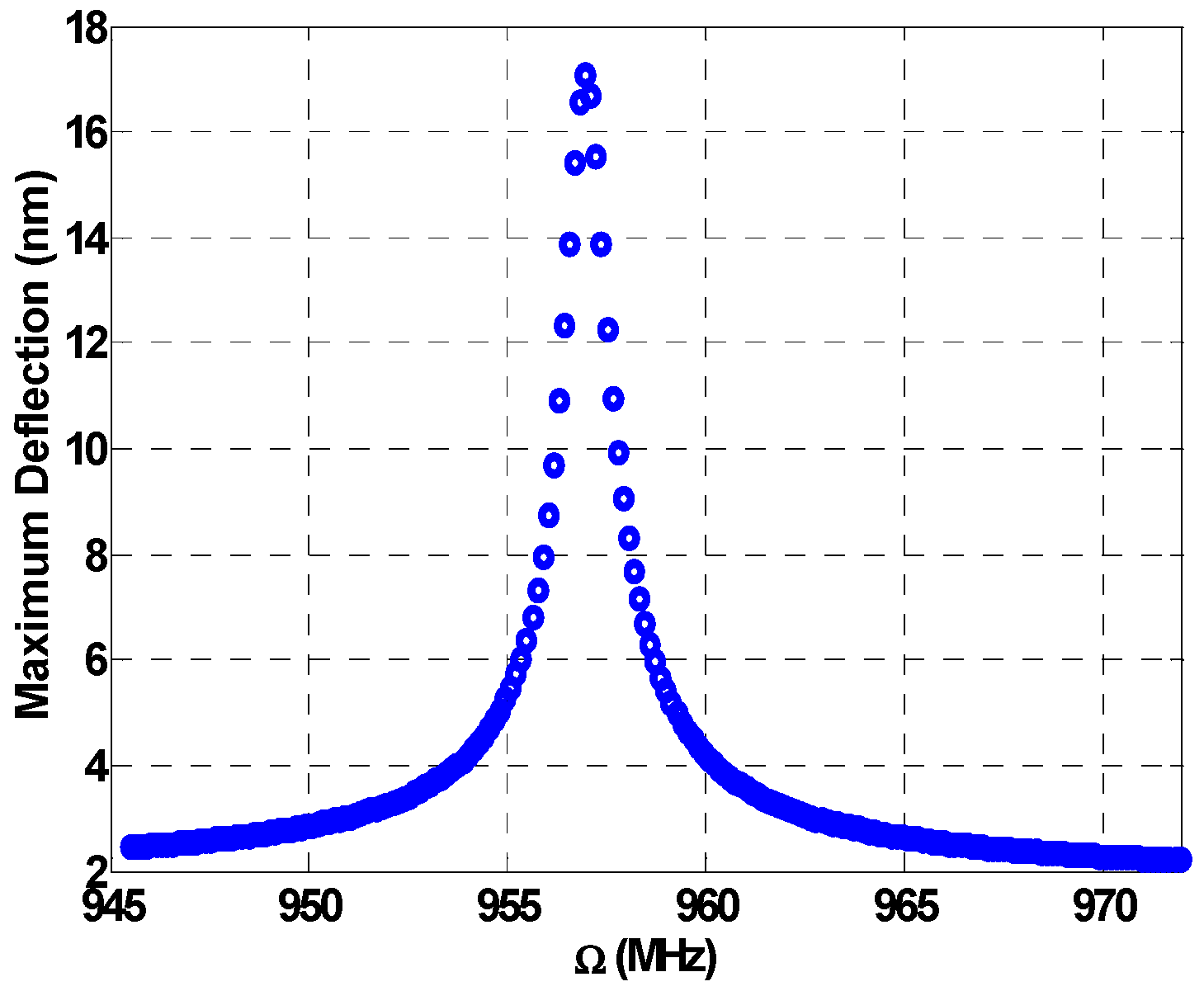
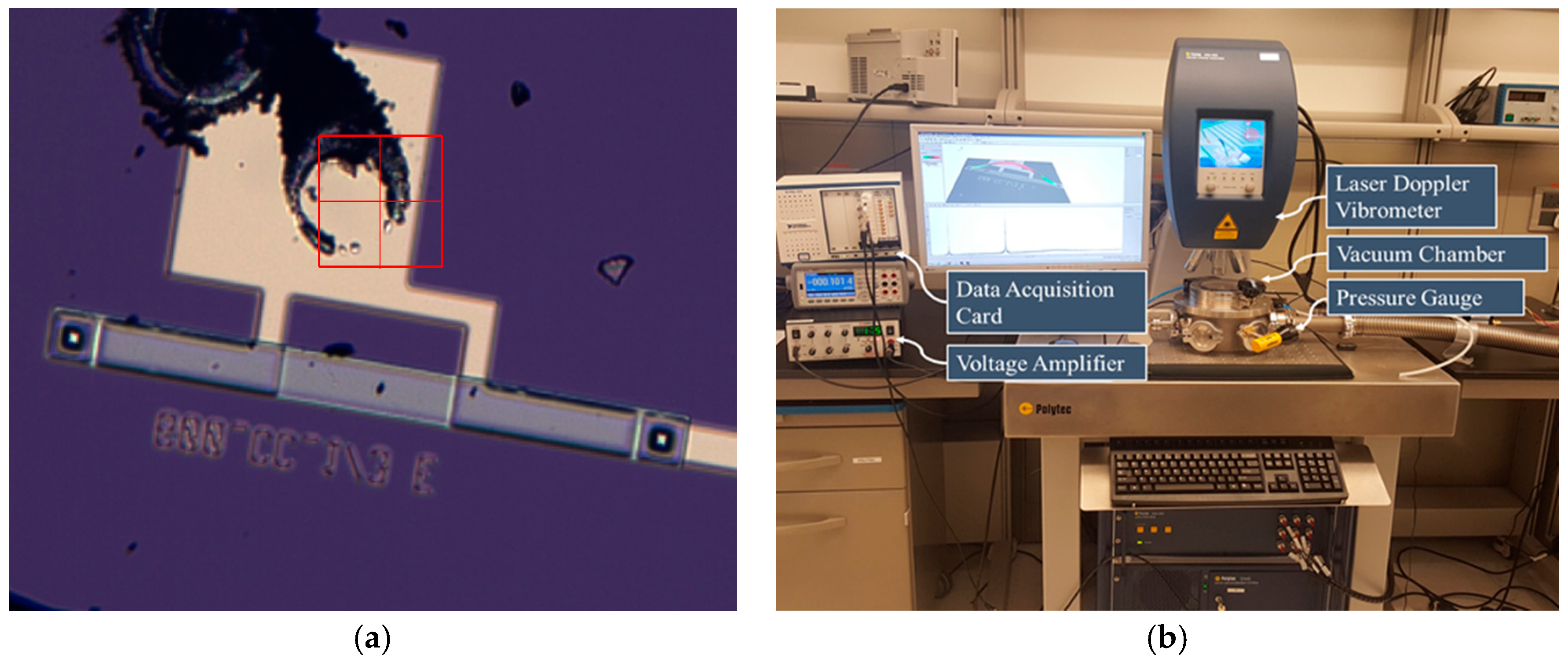
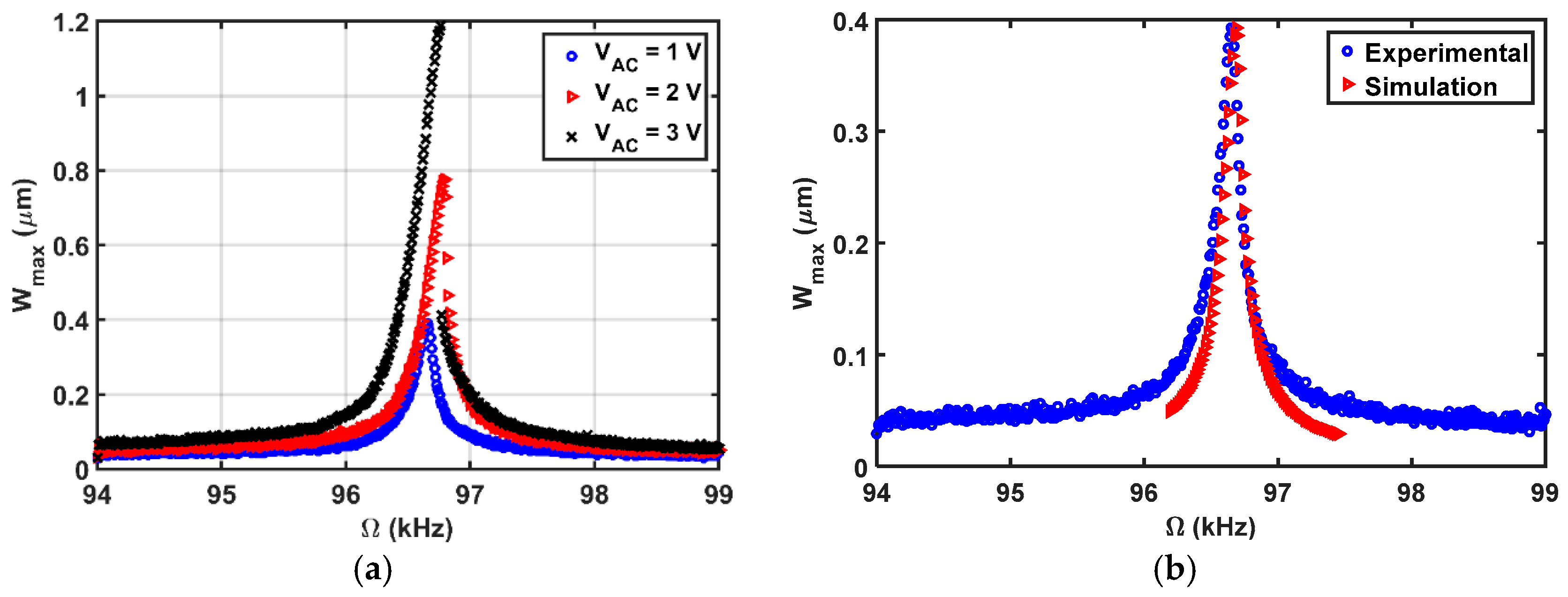
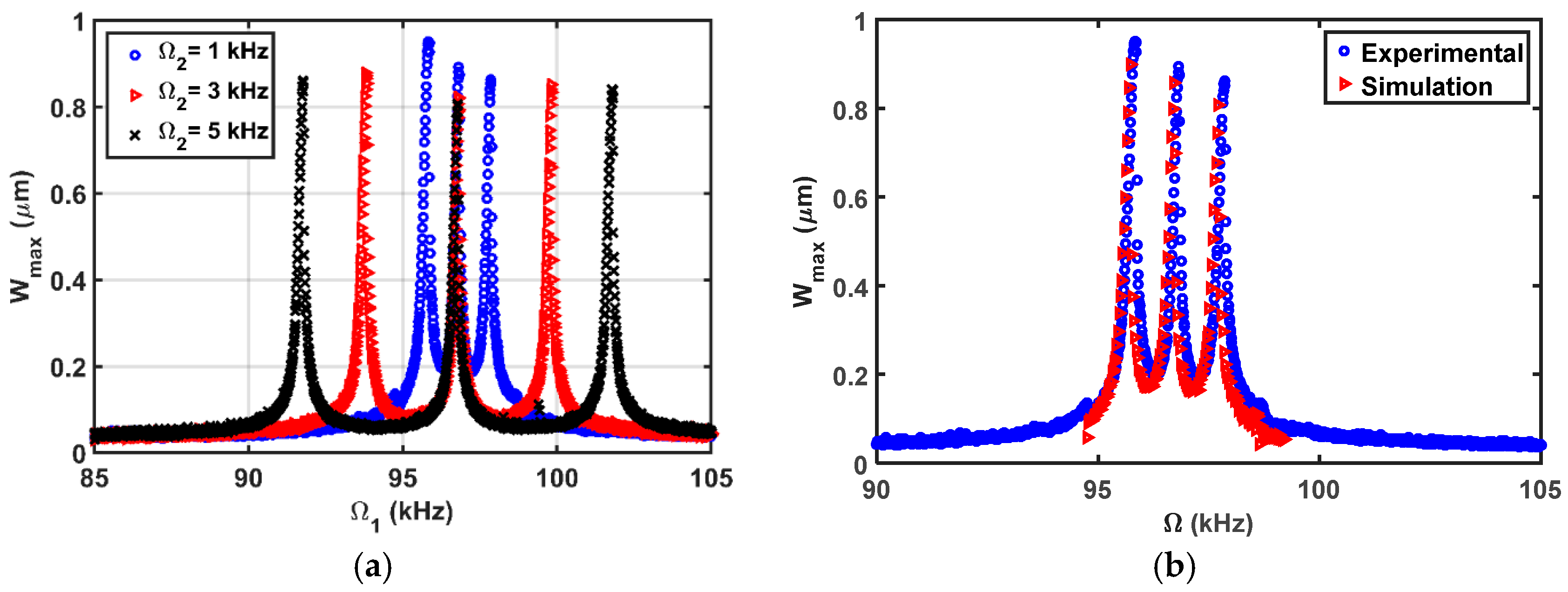
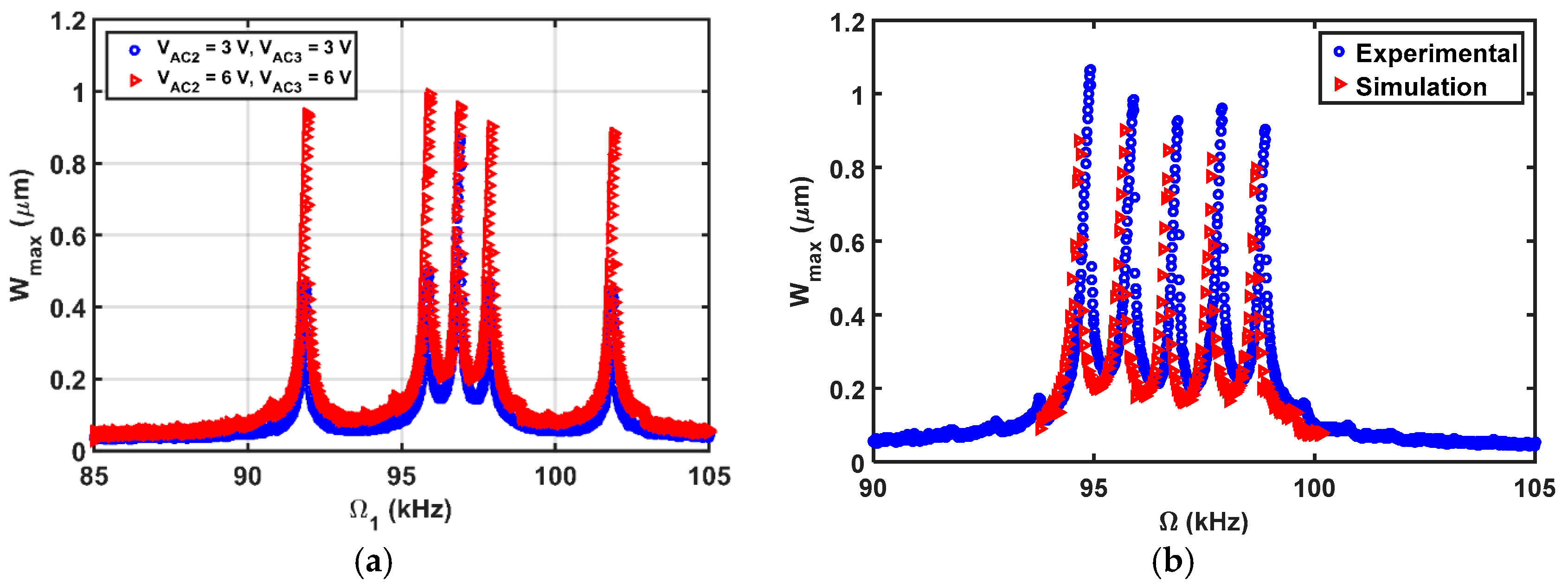
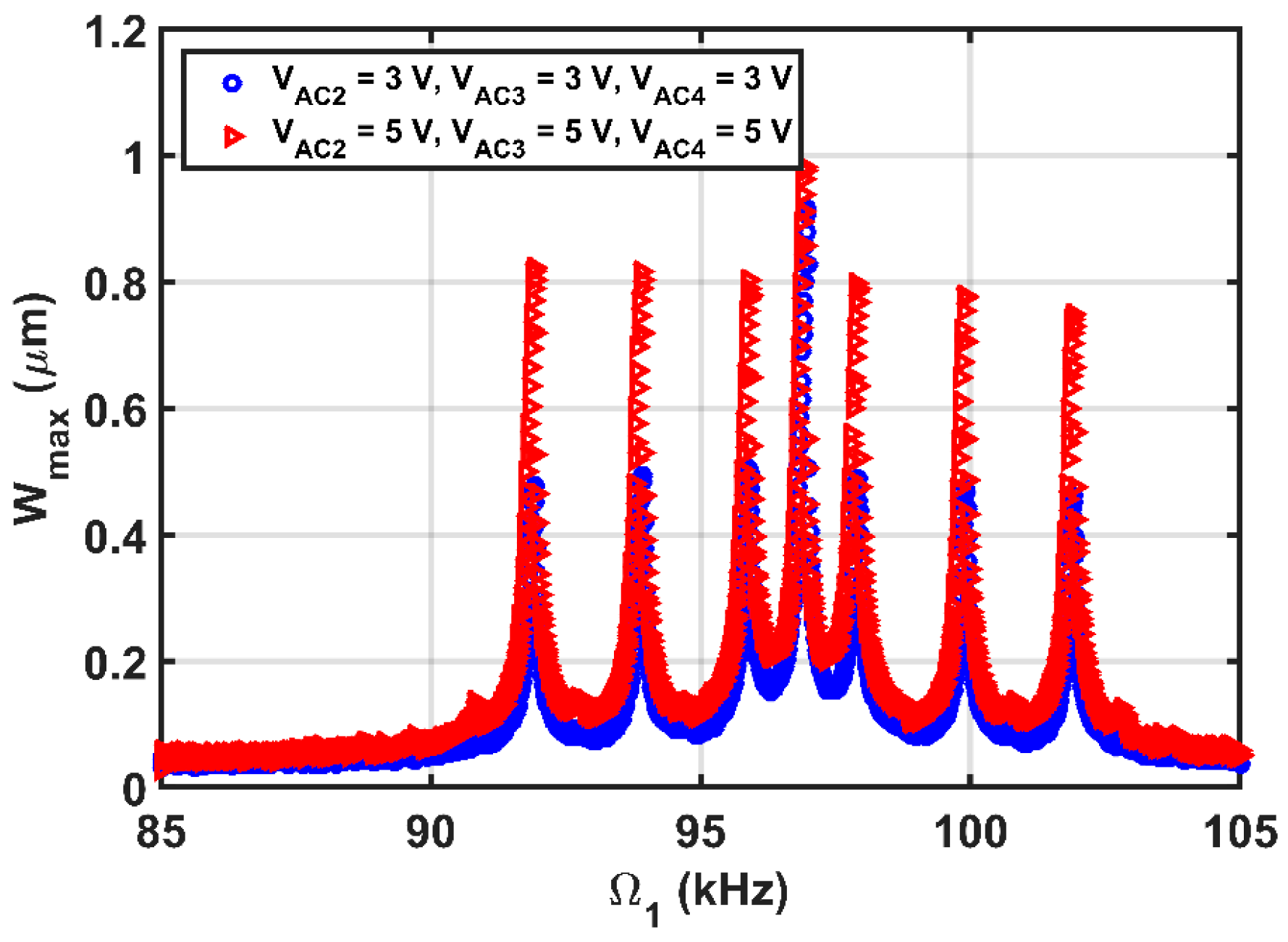
| Parameter | Value |
|---|---|
| Young’s Modulus () | |
| Density () | |
| Beam length (L) | |
| Beam width () | |
| Beam thickness () | |
| Gab () |
| Parameter | Value |
|---|---|
| L | |
| h | |
| Parameter | Value |
|---|---|
| Young’s Modulus () | |
| Density () | |
| Beam length () | |
| Beam width () | |
| Beam thickness () | |
| Gab () |
| Parameter | Value |
|---|---|
| Non-dimensional axial force (Nnon) | |
| Flexural regidity (EI) | 2.93 × 10−11 N·m2 |
| Damping ratio | 6 × 10−4 |
© 2017 by the authors. Licensee MDPI, Basel, Switzerland. This article is an open access article distributed under the terms and conditions of the Creative Commons Attribution (CC BY) license ( http://creativecommons.org/licenses/by/4.0/).
Share and Cite
Ibrahim, A.; Jaber, N.; Chandran, A.; Thirupathi, M.; Younis, M. Dynamics of Microbeams under Multi-Frequency Excitations. Micromachines 2017, 8, 32. https://doi.org/10.3390/mi8020032
Ibrahim A, Jaber N, Chandran A, Thirupathi M, Younis M. Dynamics of Microbeams under Multi-Frequency Excitations. Micromachines. 2017; 8(2):32. https://doi.org/10.3390/mi8020032
Chicago/Turabian StyleIbrahim, Alwathiqbellah, Nizar Jaber, Akhil Chandran, Maloth Thirupathi, and Mohammad Younis. 2017. "Dynamics of Microbeams under Multi-Frequency Excitations" Micromachines 8, no. 2: 32. https://doi.org/10.3390/mi8020032






